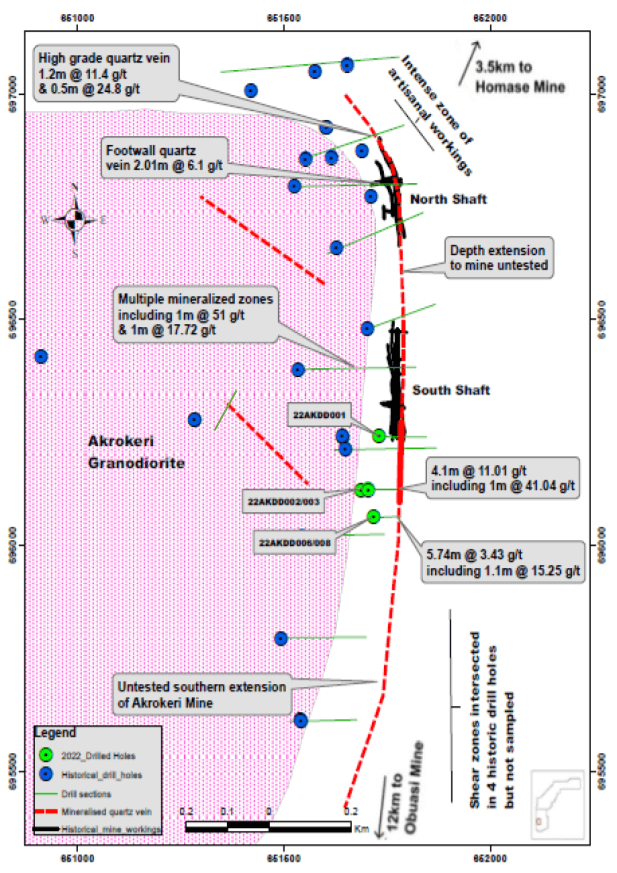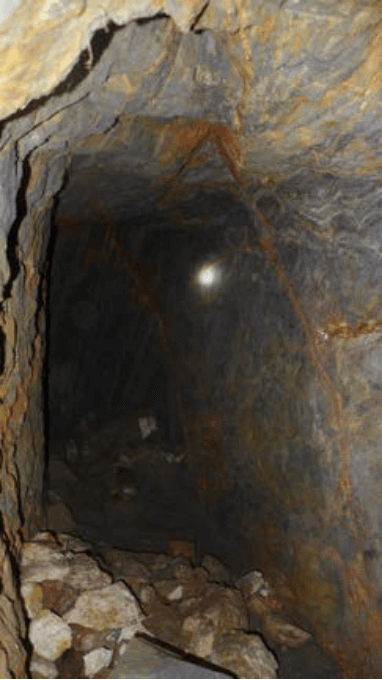| Former Underground Akrokeri Mine Profile | |
|---|---|
| Ownership | 100% GoldStone Akrokeri Limited |
| Previous Mining Method | The Akrokeri underground mine was operated between 1900 and 1909 by Akrokerri (Ashanti) Mines Limited.
The mine was developed from two shafts approximately 420m apart with its ore treated in a 20-stamp cyanide mill. The lowest mine workings extend to a depth of 114m, where mining stopped apparently due to an inflow of water. In 1934, an unsuccessful attempt was made to dewater the mine. During the four-year production period, between 1905 and 1909, 94,500 tonnes of ore were mined to produce about 75,071 ounces of gold. The recoverable grade is calculated to be 24.7g Au/ton. |
| Mineralisation style | Granitoid-hosted gold deposit and sheared metasediments associated with quartz veining |
| Mineralisation characteristics |
|
| Exploration | Birim Gold (1996) & Pan African Resources (2000)
– 5,200m Diamond Drilling
|
Former Akrokeri Mine


